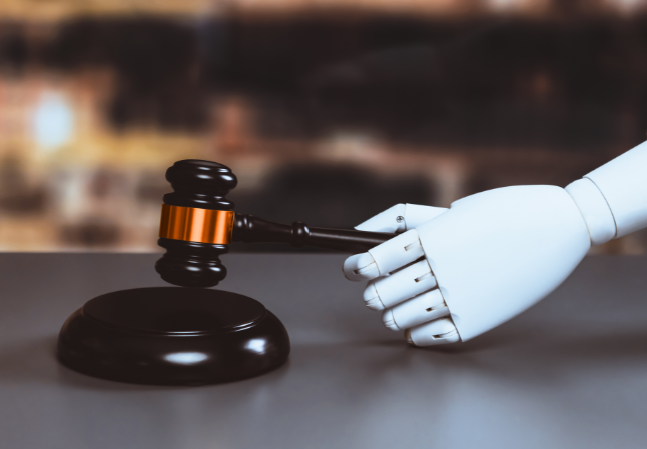- videocam Live Webinar with Live Q&A
- calendar_month July 10, 2025 @ 1:00 p.m. ET./10:00 a.m. PT
- signal_cellular_alt Intermediate
- card_travel Bankruptcy
- schedule 90 minutes
Bankruptcy Litigation Roadmap: Obtaining Nonconsensual Third-Party Releases Through Sale and Settlement
Welcome! Save 30% on all CLE, CPE, and Professional Skills webinars, plus 15% off any annual pass with code HOLIDAY25
About the Course
Introduction
This CLE webinar will discuss whether Harrington v. Purdue Pharma L.P., 603 U.S. 204, 144 (2024), applies only to plans of reorganization or also limits nonconsensual third-party releases from being approved in other types of settlement or sale agreements routinely approved by bankruptcy courts, and why or why not. The program will review In re Hopeman Brothers Inc. No. 24-32428 (Bankr. E.D. Va. Jan. 24, 2025), and In re Roman Catholic Diocese of Rockville Center, N.Y., No. 20-12345 (Bankr. S.D.N.Y. Dec. 4, 2024), ECF No. 3465, in which the bankruptcy courts approved nonconsensual third-party releases as part of insurer settlements with the debtors. The panel will explore arguments that the subject nonconsensual third-party releases contravened Purdue, each court's reasoning in favor of approving nonconsensual third-party releases, the key facts and competing interests that controlled or that might have changed the outcome, and how insurers and debtors might leverage the holdings and rationales in other contexts to either reanimate nonconsensual third-party releases or to show that Purdue is to be applied beyond confirmation.
Description
Although Purdue was a seminal decision that changed the benefits and mechanics of resolving litigation through bankruptcy, its scope is not unlimited. The bankruptcy courts in Hopeman Brothers and other similar cases have found Purdue inapplicable to Section 363 sales and to certain settlements approved pursuant to Bankruptcy Rule 9019, in part because Purdue appears to be at odds with Section 363's promise of a "free and clear" sale. Yet the proponents of settlements have been careful to show that the relief was narrowly tailored "to the facts presented" and a valid exercise of the debtor's business judgment.
Nonetheless, Hopeman will not be the last word. It was an asbestos case, which enjoys special status under the Bankruptcy Code, even if the transaction at issue was a standard "buy back" of insurance coverage. Courts are wary of allowing parties to bypass confirmation and achieve through a sale what they cannot get through a plan. Some courts have drawn distinctions between discharging or releasing claims of third parties and liquidation of claims, for example In re Bird Global Inc., et al., Case No. 23-20514-CLC. Whether such distinctions will withstand scrutiny is to be seen. Although Purdue did limit itself to addressing nonconsensual third-party releases through confirmation and 11 U.S.C. 1123(b)(6), different facts may well produce different results.
Listen as the experienced panel of bankruptcy lawyers unpacks just how much the parties can limit Purdue to the confirmation context and the ability of lawyers to leverage Section 363 and other types of bankruptcy relief to indirectly resurrect nonconsensual third-party releases.
Presented By

Mr. Bair is a founding partner at Burns Bair LLP. He devotes the majority of his practice to working with sexual-abuse survivors and other tort claimants and their attorneys on the most significant insurance issues of the day, having been retained as special insurance counsel by creditors’ committees in twelve of the largest religious-affiliated bankruptcies in the country: the Diocese of Rochester, New York; the Diocese of Syracuse, New York; the Diocese of Albany, New York; the Diocese of Buffalo, New York; the Diocese of Ogdensburg, New York; the Diocese of Rockville Centre, New York; the Roman Catholic Archbishop of Baltimore, Maryland; the Franciscan Friars of California, Inc.; the Bishop of Oakland, California; the Bishop of Santa Rosa, California; the Bishop of Sacramento, California; and the Archbishop of San Francisco, California. Mr. Bair also represents the post-confirmation settlement trust pursuing insurance recoveries from non-settling insurers in connection with the Diocese of Winona-Rochester, Minnesota bankruptcy.

With experience in a broad range of industries, including healthcare, hospitality, food and beverage, manufacturing, retail, technology, transportation, and banking, Mr. Prescott helps businesses and individuals accomplish their goals by working closely with his clients and their advisors to understand the specifics of each situation and provide creative, cost-effective solutions to complex problems, both inside and outside of the courtroom.
-
This 90-minute webinar is eligible in most states for 1.5 CLE credits.
-
Live Online
On Demand
Date + Time
- event
Thursday, July 10, 2025
- schedule
1:00 p.m. ET./10:00 a.m. PT
I. Introduction
II. Currently prevailing rationales for limiting releases beyond confirmation
III. Currently prevailing rationales for limiting Purdue
IV. Critical facts and procedural posture of recent cases
V. Best practices for securing or limiting releases
The panel will review these and other key issues:
- Do decisions allowing nonconsensual third-party releases in sale orders make a distinction with a difference?
- How broad is too broad for nonconsensual third-party releases in sale orders?
- Will courts scrutinize releases in sale orders in light of proposed plans?
- What happens if a creditor opts out of the plan release?
Unlimited access to premium CLE courses:
- Annual access
- Available live and on-demand
- Best for attorneys and legal professionals
Unlimited access to premium CPE courses.:
- Annual access
- Available live and on-demand
- Best for CPAs and tax professionals
Unlimited access to premium CLE, CPE, Professional Skills and Practice-Ready courses.:
- Annual access
- Available live and on-demand
- Best for legal, accounting, and tax professionals
Unlimited access to Professional Skills and Practice-Ready courses:
- Annual access
- Available on-demand
- Best for new attorneys
Related Courses

IP Issues in Bankruptcy: Identification, Treatment, Valuation, and Monetization
Available On-Demand
Recommended Resources

Transforming CLE from a Requirement to a Career Advantage
- Learning & Development
- Career Advancement
- Talent Development

Beyond Law School: Tackling the Realities of Modern Legal Practice
- Learning & Development
- Business & Professional Skills
- Career Advancement

